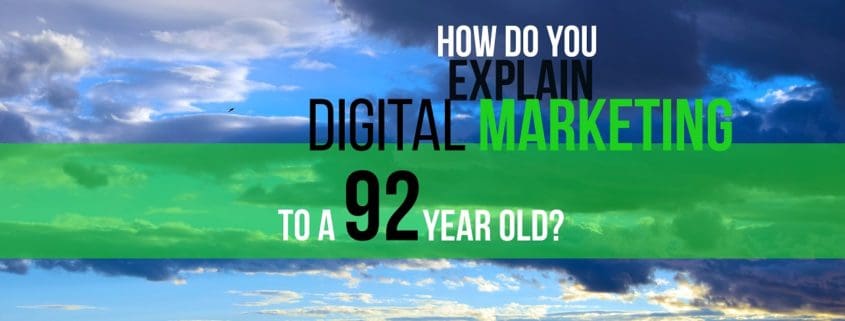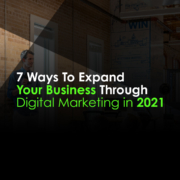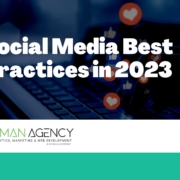How Do You Explain Digital Marketing to a 92 Year Old?
I was recently invited by a networking group to give a presentation on how digital marketing is impacting the way we market and do business.
As I began the presentation, I introduced myself and what I do, then moved into an explanation of search engine optimization, search engine marketing and the ins and outs of this constantly changing market.
About 25 minutes into the presentation, as I immersed the crowds in details of digital marketing and how I use it to make brands and businesses grow and increase their online presence, I saw a shaky hand emerge from the audience.
I assumed the hand indicated a question about my current slide. I welcomed the question.
The gentleman attached to the hand took his time standing up. He looked at me with a blank face, seeming hesitant to ask his question.
He then uttered these 4 words: “What is digital marketing?”
You had to be there to see the surprise on my face. I wasn’t expecting this question at all, especially not so far into the presentation. And not because the question was wrong to ask. In fact, this 92-year-old gentleman was brave to ask it.
I was surprised because, while I have answered this question many times, for many different people (even an 8-year-old!), I was not prepared to answer it for a 92-year-old.
There I was, onstage, trying to put myself into a 92-year-old mind. What kind of marketing has he been exposed to in his lifetime? What kind of marketing would he be seeing today? Where would he go when looking for a product or a service?
With more than a 60 year age gap between myself and this gentleman, it was a challenge.
I decided to start answering what I knew – comparing traditional marketing to digital marketing and explaining the difference.
“As marketing throughout the 60s,70s, 80s and 90s was mainly through TV, radio and newspapers, that is considered ‘traditional marketing’. Digital marketing is done through more recent technologies such as mobile phones, computers and tablets, while utilizing different channels such as search engines and social media.”
The blank stare persisted. Except now, it looked even blanker.
I was trying to find something in my mind that this fine gentleman could relate to.
Suddenly, I had an epiphany.
I remembered helping a friend’s parents move. I clearly remembered seeing stacks of Yellow Pages as we moved boxes of books and magazines from their basement. I asked why they kept them, to which they replied that they wanted to ensure they had the numbers and contacts of everyone from year to year, as advertisers tended to vary annually. To them, it was a coveted database of contacts.
Back in my onstage moment, I took a deep breath, smiled and said to the gentleman,“Remember in the old days when you wanted to find something or someone, your first instinct was to look for them in the Yellow Pages book? Nowadays, all you have to do is search them up on search engines such as Google.”
As soon as I said this, he smiled. His whole face lit up.
To him, digital means that the coveted Yellow Pages book and its wealth of information are now online. Advertisers that once used the Yellow Pages as a channel to increase their presence now use search engines and social media to do the same.
You see, the game hasn’t changed. Only the field. Marketing has always been about getting your message where people will look for it, find it, see it, consume it.
So the next time you are sitting down with Grandma and Grandpa and, out of nowhere, they throw you an unexpected question on any digital-related matter, you will know exactly how to answer them. Start with the playing field they know.
Follow Tarek Riman on Twitter @tarekriman










Leave a Reply
Want to join the discussion?Feel free to contribute!